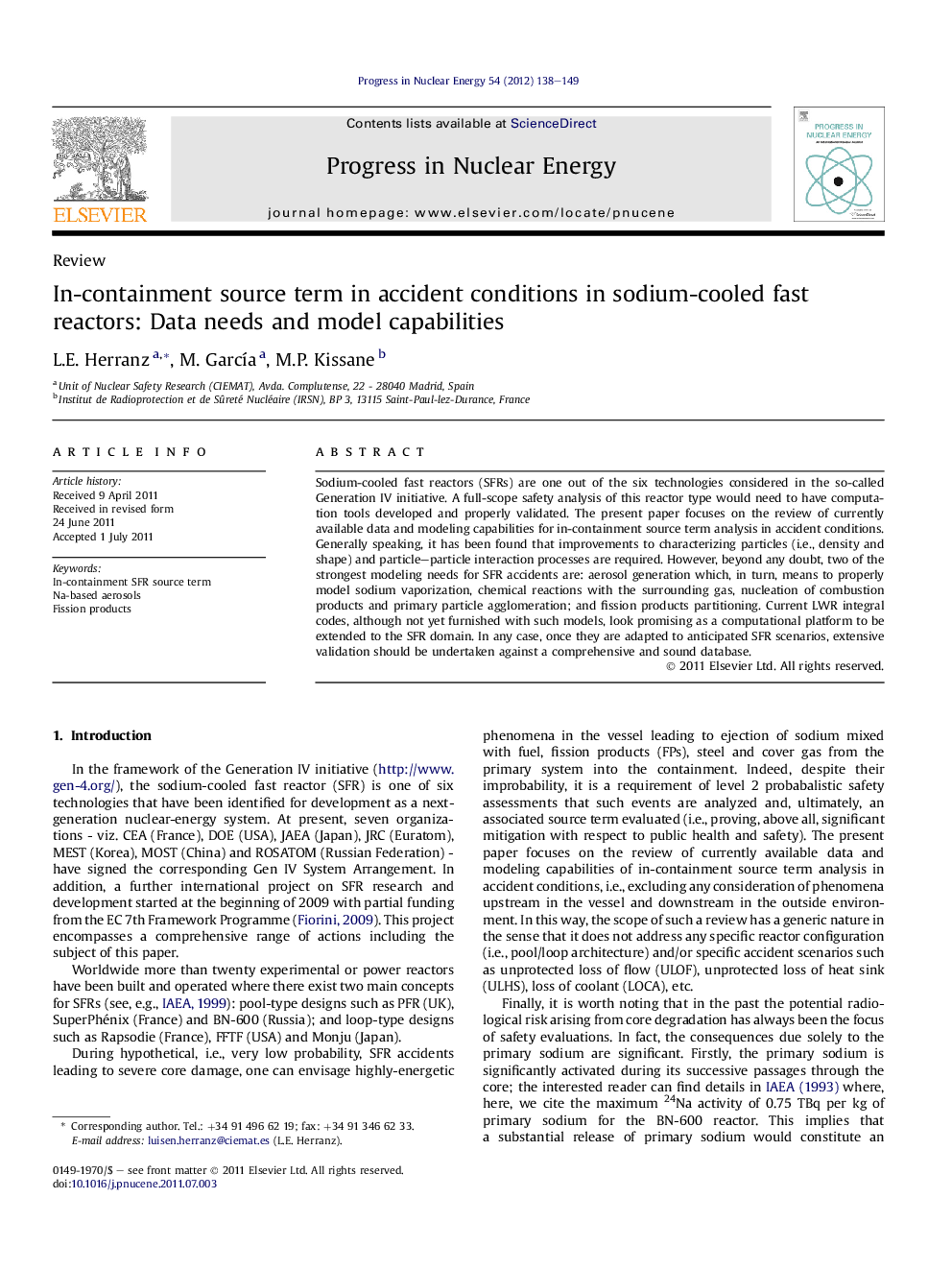| Article ID | Journal | Published Year | Pages | File Type |
|---|---|---|---|---|
| 1741281 | Progress in Nuclear Energy | 2012 | 12 Pages |
Sodium-cooled fast reactors (SFRs) are one out of the six technologies considered in the so-called Generation IV initiative. A full-scope safety analysis of this reactor type would need to have computation tools developed and properly validated. The present paper focuses on the review of currently available data and modeling capabilities for in-containment source term analysis in accident conditions. Generally speaking, it has been found that improvements to characterizing particles (i.e., density and shape) and particle–particle interaction processes are required. However, beyond any doubt, two of the strongest modeling needs for SFR accidents are: aerosol generation which, in turn, means to properly model sodium vaporization, chemical reactions with the surrounding gas, nucleation of combustion products and primary particle agglomeration; and fission products partitioning. Current LWR integral codes, although not yet furnished with such models, look promising as a computational platform to be extended to the SFR domain. In any case, once they are adapted to anticipated SFR scenarios, extensive validation should be undertaken against a comprehensive and sound database.
► Compilation and review of data on in-containment source term under BDBA scenarios. ► Shortcomings of analytical tools for in-containment source term analysis. ► Gathering of a thorough and extensive set of references on the paper subject.
